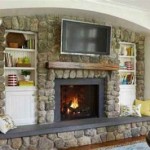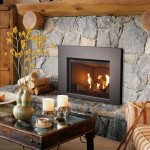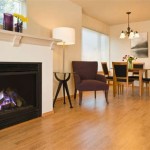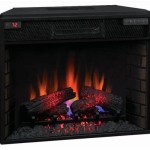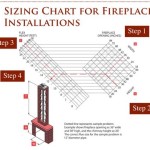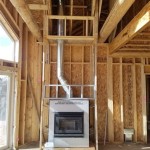Propane Gas Fireplaces: Freestanding Models
Freestanding propane gas fireplaces offer a convenient and aesthetically pleasing heating solution for homes. These units provide the ambiance of a traditional fireplace without the complexities of wood-burning or the installation requirements of built-in gas fireplaces. Understanding the features, benefits, and considerations associated with freestanding propane fireplaces is crucial for making an informed purchasing decision.
A freestanding propane gas fireplace operates by burning propane gas to generate heat. The gas is supplied from a propane tank, which can be located either inside or outside the home, depending on the model and local regulations. The fireplace itself is designed to be placed directly on the floor, requiring no structural modifications to the existing building. This makes them an attractive option for homeowners who want to add supplemental heat or enhance the visual appeal of a room without undertaking major renovations.
The efficiency of a freestanding propane fireplace is a significant factor to consider. Propane is generally a clean-burning fuel, and modern fireplaces are designed to maximize heat output while minimizing emissions. This contrasts favorably with wood-burning fireplaces, which can contribute to air pollution. Many models also include features such as thermostatic controls and programmable timers, allowing for precise temperature regulation and energy conservation.
The aesthetic appeal of these fireplaces is another key advantage. They are available in a wide range of styles, from traditional designs that mimic the look of a classic wood-burning fireplace to contemporary models with sleek, modern lines. The flame itself can be customized with various log sets, glass beads, or other decorative elements to create a personalized look. The visual impact of a freestanding propane fireplace can transform the ambiance of a room, creating a warm and inviting atmosphere.
Key Point 1: Installation and Venting Options
The installation process for a freestanding propane gas fireplace is typically less complex than that of other types of fireplaces. However, proper installation is essential to ensure safe and efficient operation. The fireplace must be connected to a propane gas supply line, which requires the expertise of a qualified technician. The technician will ensure that the gas line is properly sized and installed according to local codes and regulations.
Venting is another critical aspect of installation. Propane fireplaces require venting to safely exhaust combustion gases outside the home. There are two primary venting options: direct vent and vent-free. Direct vent fireplaces draw air from outside the home for combustion and exhaust the gases through a sealed vent system that runs either horizontally through an exterior wall or vertically through the roof. This type of venting is considered the safest and most efficient, as it prevents combustion gases from entering the living space.
Vent-free propane fireplaces, also known as ventless fireplaces, do not require a chimney or vent. They are designed to burn propane so efficiently that the combustion byproducts are minimal and considered safe for indoor use. However, vent-free fireplaces are subject to stricter regulations and may not be permitted in all jurisdictions. It is essential to check local building codes and regulations before installing a vent-free propane fireplace. Some individuals are also sensitive to even low levels of combustion byproducts, making direct vent models a preferable option.
Regardless of the venting option chosen, it is imperative to follow the manufacturer's instructions and have the installation performed by a qualified professional. Improper installation can lead to safety hazards, such as gas leaks or carbon monoxide poisoning. Regular maintenance, including inspection of the venting system and gas connections, is also essential to ensure continued safe operation.
Key Point 2: Safety Features and Considerations
Safety is a paramount concern when operating any gas-burning appliance. Freestanding propane gas fireplaces are equipped with several safety features to prevent accidents and ensure safe operation. These features include pilot lights, safety shut-off valves, and flame sensors.
The pilot light is a small, continuous flame that ignites the main burner when the fireplace is turned on. In some models, the pilot light is always on, while others feature an intermittent pilot ignition (IPI) system that only ignites the pilot light when the fireplace is in use. IPI systems are more energy-efficient, as they eliminate the continuous consumption of propane by a standing pilot light.
Safety shut-off valves are designed to automatically shut off the gas supply if the pilot light goes out or if a gas leak is detected. This prevents the accumulation of unburned propane gas, which could pose a significant safety hazard. Flame sensors monitor the presence of a flame and will shut off the gas supply if the flame is extinguished unexpectedly.
Carbon monoxide (CO) detectors should be installed in any home where a gas-burning appliance is in use. CO is a colorless, odorless gas that can be produced by incomplete combustion of propane. Exposure to high levels of CO can be fatal. CO detectors provide an early warning of elevated CO levels, allowing occupants to evacuate the building and seek medical attention.
Regular maintenance and inspection of the fireplace are also crucial for safety. This includes cleaning the burner assembly, checking the gas connections for leaks, and inspecting the venting system for obstructions. It is recommended to have the fireplace inspected annually by a qualified technician to ensure it is operating safely and efficiently.
Key Point 3: Cost and Efficiency Considerations
The cost of a freestanding propane gas fireplace can vary depending on the size, features, and style of the unit. The initial purchase price is just one factor to consider; ongoing costs, such as propane consumption and maintenance, should also be taken into account.
Propane is typically sold by the gallon, and the cost per gallon can fluctuate depending on market conditions and geographic location. The amount of propane consumed by a fireplace will depend on its BTU (British Thermal Unit) rating and the frequency of use. A higher BTU rating indicates a greater heat output, but it also means that the fireplace will consume more propane. Energy-efficient models with thermostatic controls and programmable timers can help to reduce propane consumption and lower heating costs.
In addition to propane costs, there are also maintenance costs to consider. Regular maintenance, such as cleaning the burner assembly and inspecting the venting system, can help to prevent costly repairs and extend the lifespan of the fireplace. Annual inspections by a qualified technician are also recommended to ensure safe and efficient operation.
When comparing the cost of a propane fireplace to other heating options, it is important to consider the long-term costs and benefits. While the initial purchase price of a propane fireplace may be higher than that of some other heating appliances, the convenience, aesthetic appeal, and efficiency of propane can make it a cost-effective choice in the long run. The ability to provide supplemental heat to a specific area of the home can also reduce overall heating costs by allowing homeowners to turn down the thermostat on their central heating system.
Ultimately, the decision to purchase a freestanding propane gas fireplace depends on individual needs and preferences. By carefully considering the factors discussed above, homeowners can make an informed decision and choose a fireplace that provides both warmth and beauty to their home. Furthermore, it is essential to consult with local professionals regarding permitting and installation requirements to ensure compliance with all applicable codes and regulations.

Free Standing Gas Fireplace Stoves For 30 On Now

Procom Vent Free Indoor Stove 25 000 Btu Standing Dual Fuel Propane And Natural Gas 170173 The Home Depot

Propane Freestanding Stoves From Stewart S Hearth In Miramichi

Kingsman Fvf350 27 Inch Millivolt Ignition Freestanding Vent Free Gas Stove With Log Set

Enviro S Series Freestanding Gas Or Propane Fireplace Fireplaces By Cameron

Napoleon Gds20e Arlington Electronic Ignition Direct Vent Cast Iron Stove

Valor Madrona Freestanding Gas Stove Bob S Intelligent Heating Decor

Enviro S Gas S50 Stove

Freestanding Gas Fireplaces Fergus Fireplace

Freestanding Gas Burning Stoves Sierra Hearth And Home
Related Posts


